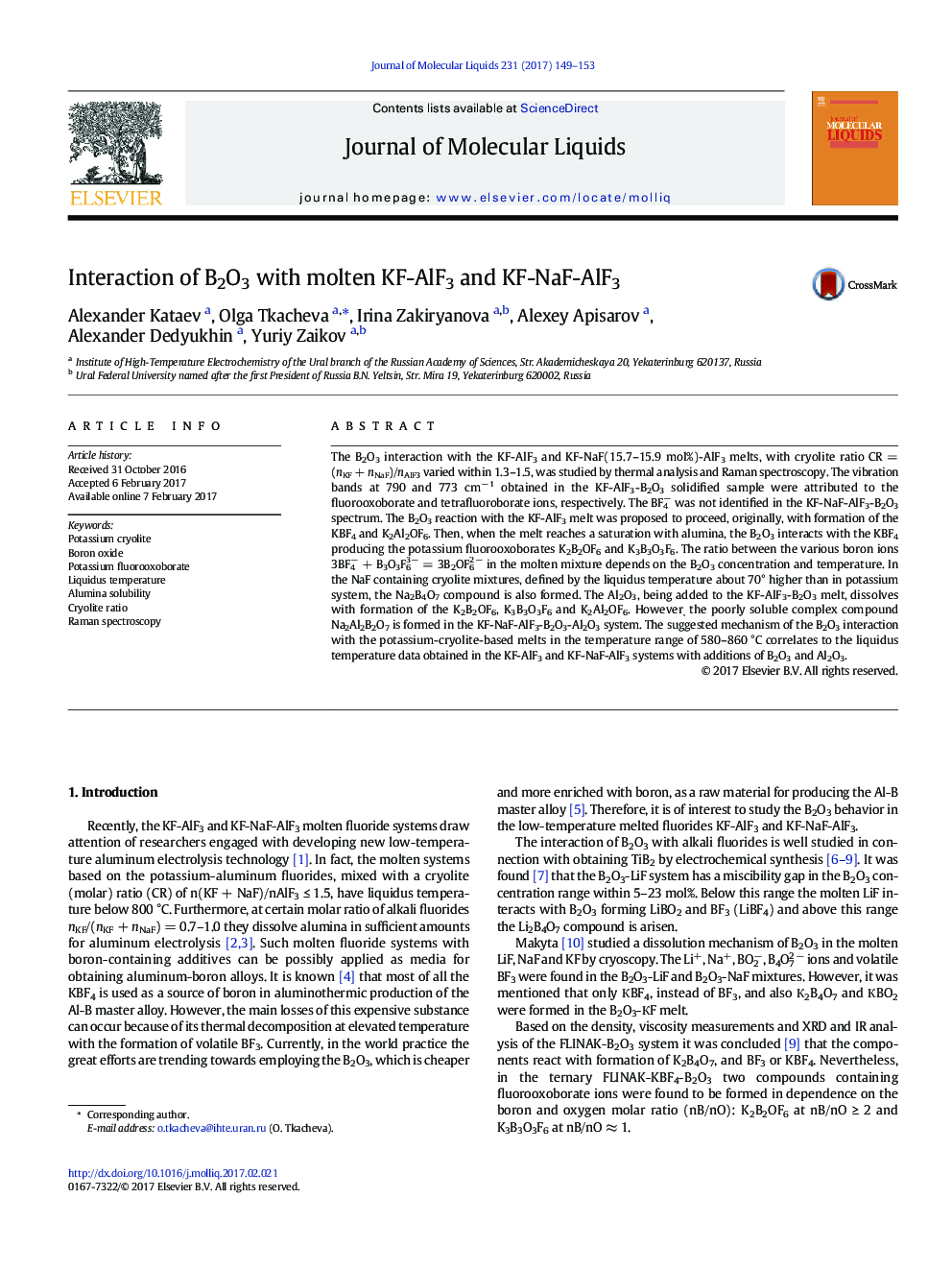| Article ID | Journal | Published Year | Pages | File Type |
|---|---|---|---|---|
| 5408701 | Journal of Molecular Liquids | 2017 | 5 Pages |
Abstract
The B2O3 interaction with the KF-AlF3 and KF-NaF(15.7-15.9 mol%)-AlF3 melts, with cryolite ratio CR = (nKF + nNaF)/nAlF3 varied within 1.3-1.5, was studied by thermal analysis and Raman spectroscopy. The vibration bands at 790 and 773 cmâ 1 obtained in the KF-AlF3-B2O3 solidified sample were attributed to the fluorooxoborate and tetrafluoroborate ions, respectively. The BF4â was not identified in the KF-NaF-AlF3-B2O3 spectrum. The B2O3 reaction with the KF-AlF3 melt was proposed to proceed, originally, with formation of the KBF4 and K2Al2OF6. Then, when the melt reaches a saturation with alumina, the B2O3 interacts with the KBF4 producing the potassium fluorooxoborates K2B2OF6 and K3B3O3F6. The ratio between the various boron ions 3BF4â + B3O3F63â = 3B2OF62 â in the molten mixture depends on the B2O3 concentration and temperature. In the NaF containing cryolite mixtures, defined by the liquidus temperature about 70° higher than in potassium system, the Na2B4O7 compound is also formed. The Al2O3, being added to the KF-AlF3-B2O3 melt, dissolves with formation of the K2B2OF6, K3B3O3F6 and K2Al2OF6. However, the poorly soluble complex compound Na2Al2B2O7 is formed in the KF-NaF-AlF3-B2O3-Al2O3 system. The suggested mechanism of the B2O3 interaction with the potassium-cryolite-based melts in the temperature range of 580-860 °C correlates to the liquidus temperature data obtained in the KF-AlF3 and KF-NaF-AlF3 systems with additions of B2O3 and Al2O3.
Related Topics
Physical Sciences and Engineering
Chemistry
Physical and Theoretical Chemistry
Authors
Alexander Kataev, Olga Tkacheva, Irina Zakiryanova, Alexey Apisarov, Alexander Dedyukhin, Yuriy Zaikov,
